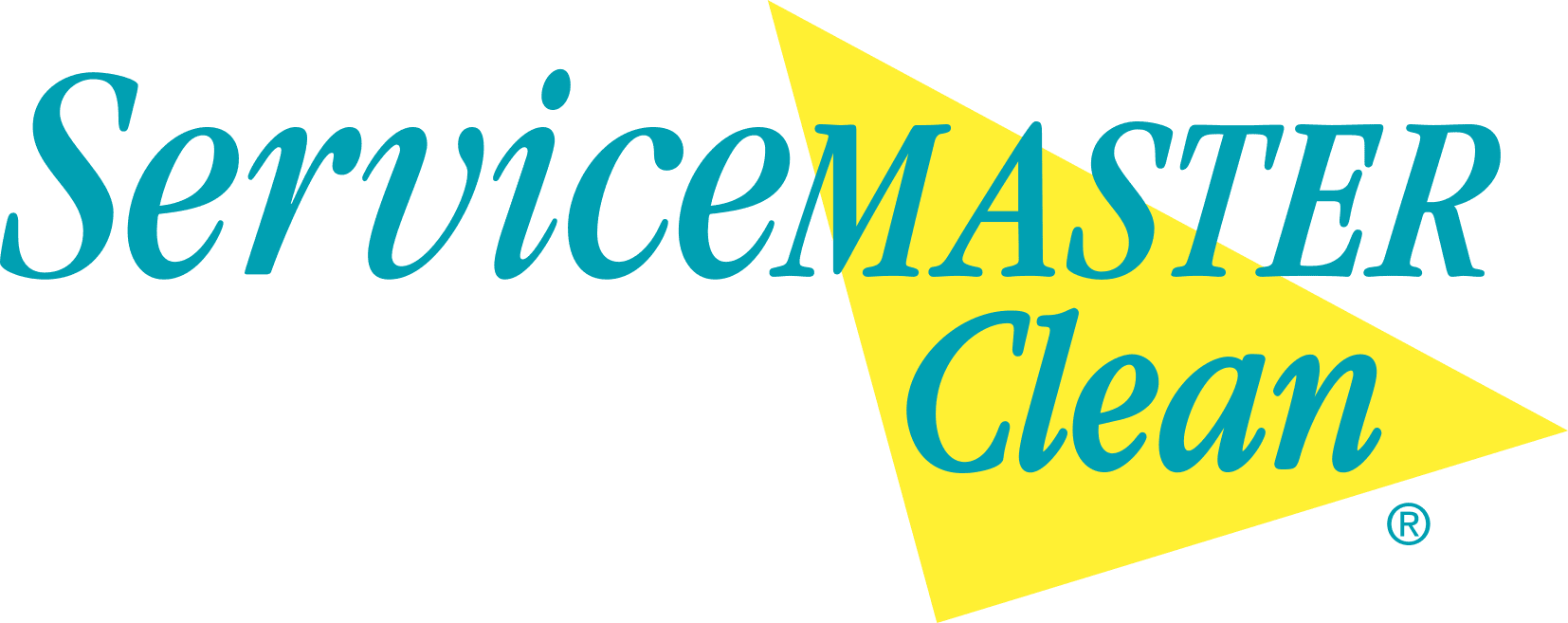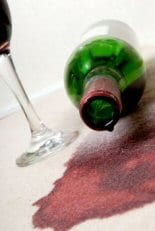Spot Cleaning – Identify and Cleaning Agent Selection
 Previously in e-tips blog article we looked at the first step in protecting your carpets: entrance mats and vacuuming. The second step in any program involves spot cleaning.
Previously in e-tips blog article we looked at the first step in protecting your carpets: entrance mats and vacuuming. The second step in any program involves spot cleaning.
Spot cleaning should be as often as possible by you, or in a strata’s case, staff onsite The goal is to remove whatever discoloring material adheres to the outside of the carpet fibres causing a visible spot – without harming the fabric of the carpet.
Before we get into how to remove spots from carpet, let’s first look at what you may find.
Types of Spots – Identification Leads to Eradication
Water Soluble: Most spots are water soluble and will respond to water based cleaning solutions. This is why you find a wide variety of water based cleaning solutions.
Non-Water Soluble: Most non-water soluble sots consist of oils, greases and pigments, etc. Some of these can be converted to water soluble form enabling water based solutions to be used.
Non-Soluble: These cannot be dissolved with either wet or dry solvents. (example, wax.)
Combination Spots: Some spots are caused by substances that have both water solube and non-water soluble characteristics. These spots require treatment of both water based and non-water based cleaners.
Chemical Spots: These are spots that must be first chemically reacted before using water based or non-water based solvents. Examples: rust, medicines, urine, acids, alkalis, etc.
Surface Spots: The spotting material is present on the fibers or between the fibers. Examples are grease, gum, glue.
Absorbed Spots: The spotting material is present in the fibers. Penetration of the fibers has taken place. Examples: coffee, ink, urine.
Compound Spots: The spot is present on and in the fibers. Examples: paint, shoe polish, lipstick.
Destructive Stains: The staining material has altered the nature of the fibers. Most destructive stains cannot be removed. Examples: acids, bleaches, burns.
Dye Stains: This occurs when acid dyes are spilled onto carpet. They are actually dyes that replace the former color of the fiber.
Dye Loss: If a stain is lighter than the color of th carpet, some dye loss has occurred which means that cleaning will not solve the problem. Re-coloring is the best solution.
First identify what you’re dealing with, and then you can use the appropriate product to try and remove the spot. Some, like destructive stains or dye stains may not be able to be removed. For those that can, read below.
Spot Removal Guide
Source: the Carpet Maintenance Spec Guide, from Interfaceflor.
The chart below is a guideline for spot removal. Follow each step in order, proceeding to the next step only if the previous step failed to remove the stain. The use of a portable extractor with water is highly recommended for a first attempt at spot removal and can be used after each step to flush solution. For unknown spots use water first, and then try a dry cleaning solvent, followed by detergent solution.
Spotting Solutions
1. Detergent Solution – Mix 1/4 teaspoon colorless mild detergent in 1 cup water.
2. Ammonia Solution – Mix 1 tablespoon clear household ammonia in ½ cup water.
3. Vinegar Solution – Mix 1/3 cup white household vinegar in 2/3 cup water.
4. Dry Cleaning Solvent – Apply isopropyl alcohol (standard rubbing alcohol) to clean cloth and blot. DO NOT apply directly on carpet.
5. Scrape away as much as possible with a spoon or dull knife. Then use product in the next step to further address the stain.
The chart below shows you which solutions to try based on what is causing the spot or stain.
|
Spot/Stain
|
First Attempt |
Second Attempt |
Third Attempt |
|
Beer |
1 |
3 |
|
|
Blood |
1 |
2 |
|
|
Butter or Margarine |
4 |
1 |
|
|
Candle Wax |
5, then lay a towel or paper bag over top remaining wax, and iron it on medium heat, heating the wax and transferring to towel. |
||
|
Chewing Gum |
Harden gum with ice until brittle, 5 |
4 or use a commercial chewing gum remover |
|
|
Chocolate |
5 |
1 |
2 |
|
Cocktails |
1 |
3 |
|
|
Coffee |
1 |
3 |
|
|
Cough Syrup |
1 |
2 |
|
|
Crayons |
5 |
4 |
|
|
Egg (raw) |
Blot |
4 |
2 |
|
Food Coloring |
1, until color no longer transfers to towel |
2 |
|
|
Fruit Juice |
1 |
2 |
|
|
Furniture Stain |
4 |
||
|
Glue |
1 |
4 |
|
|
Gravy |
1 |
2 |
|
|
Greases |
5 |
4 |
|
|
Ice Cream |
1 |
2 |
|
|
Ink (ballpoint) |
4 |
||
|
Ink (India) |
4 |
||
|
Jam or Jelly |
1 |
2 |
|
|
Ketchup or Tomato Sauce |
1 |
2 |
|
|
Lipstick |
5 |
2 |
|
|
Mildew |
1 |
2 |
|
|
Milk |
1 |
2 |
|
|
Mucilage |
1 |
2 |
|
|
Mud |
5 |
1 |
2 |
|
Mustard |
1 |
3 |
|
|
Nail Polish |
4 |
Apply amyl acetate or nail polish remover to cloth and blot. PRETEST FIRST |
|
|
Oils |
4 |
||
|
Paint (oil based) |
4 |
||
|
Paint (water based) |
1 |
||
|
Rubber Cement |
Roll the glue off when it has hardened sufficiently |
4 |
|
|
Rust |
Apply rust remover or warm oxalic acid solution for 10 – 15 minutes |
2 |
|
|
Shoe Polish |
4 |
||
|
Soft Drinks |
1 |
2 |
|
|
Soot |
1 |
4 |
|
|
Tar & Asphalt |
5 |
4 |
|
|
Toothpaste |
5 |
3 |
|
|
Urine |
Blot as much as possible if still wet |
1 |
3 |
|
Vomit |
Blot as much as possible if still wet |
1 |
2 |
|
Wine |
1 |
3 |
<!–[if gte mso 9]> <![endif]–><!–[if gte mso 9]> Normal 0 false false false EN-CA X-NONE X-NONE <![endif]–><!–[if gte mso 9]> <![endif]–><!–[endif]–>
|
Spot/Stain
|
First Attempt |
Second Attempt |
Third Attempt |
|
Beer |
1 |
3 |
|
|
Blood |
1 |
2 |
|
|
Butter or Margarine |
4 |
1 |
|
|
Candle Wax |
5, then lay a towel or paper bag over top remaining wax, and iron it on medium heat, heating the wax and transferring to towel. |
||
|
Chewing Gum |
Harden gum with ice until brittle, 5 |
4 or use a commercial chewing gum remover |
|
|
Chocolate |
5 |
1 |
2 |
|
Cocktails |
1 |
3 |
|
|
Coffee |
1 |
3 |
|
|
Cough Syrup |
1 |
2 |
|
|
Crayons |
5 |
4 |
|
|
Egg (raw) |
Blot |
4 |
2 |
|
Food Coloring |
1, until color no longer transfers to towel |
2 |
|
|
Fruit Juice |
1 |
2 |
|
|
Furniture Stain |
4 |
||
|
Glue |
1 |
4 |
|
|
Gravy |
1 |
2 |
|
|
Greases |
5 |
4 |
|
|
Ice Cream |
1 |
2 |
|
|
Ink (ballpoint) |
4 |
||
|
Ink (India) |
4 |
||
|
Jam or Jelly |
1 |
2 |
|
|
Ketchup or Tomato Sauce |
1 |
2 |
|
|
Lipstick |
5 |
2 |
|
|
Mildew |
1 |
2 |
|
|
Milk |
1 |
2 |
|
|
Mucilage |
1 |
2 |
|
|
Mud |
5 |
1 |
2 |
|
Mustard |
1 |
3 |
|
|
Nail Polish |
4 |
Apply amyl acetate or nail polish remover to cloth and blot. PRETEST FIRST |
|
|
Oils |
4 |
||
|
Paint (oil based) |
4 |
||
|
Paint (water based) |
1 |
||
|
Rubber Cement |
Roll the glue off when it has hardened sufficiently |
4 |
|
|
Rust |
Apply rust remover or warm oxalic acid solution for 10 – 15 minutes |
2 |
|
|
Shoe Polish |
4 |
||
|
Soft Drinks |
1 |
2 |
|
|
Soot |
1 |
4 |
|
|
Tar & Asphalt |
5 |
4 |
|
|
Toothpaste |
5 |
3 |
|
|
Urine |
Blot as much as possible if still wet |
1 |
3 |
|
Vomit |
Blot as much as possible if still wet |
1 |
2 |
|
Wine |
1 |
3 |

